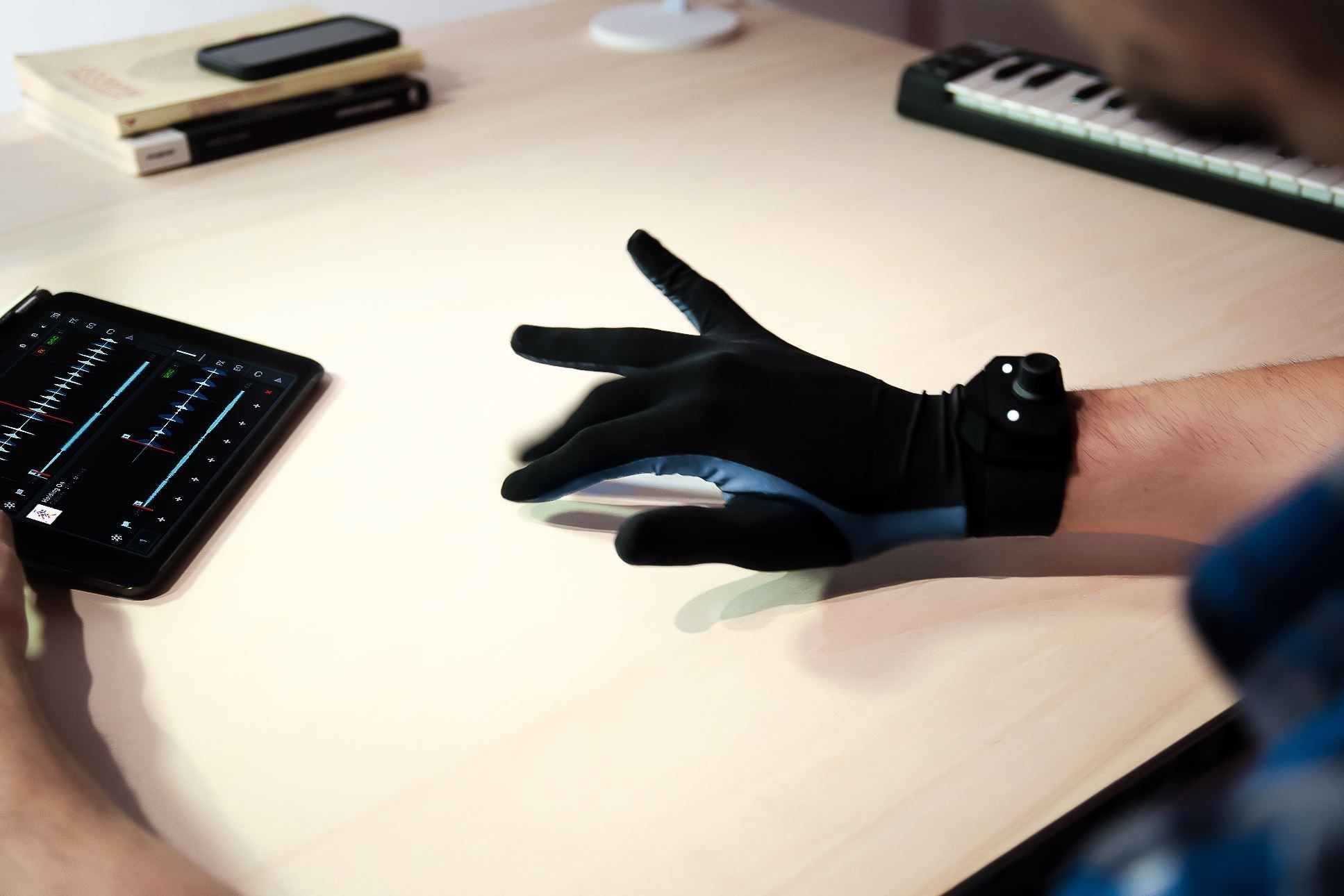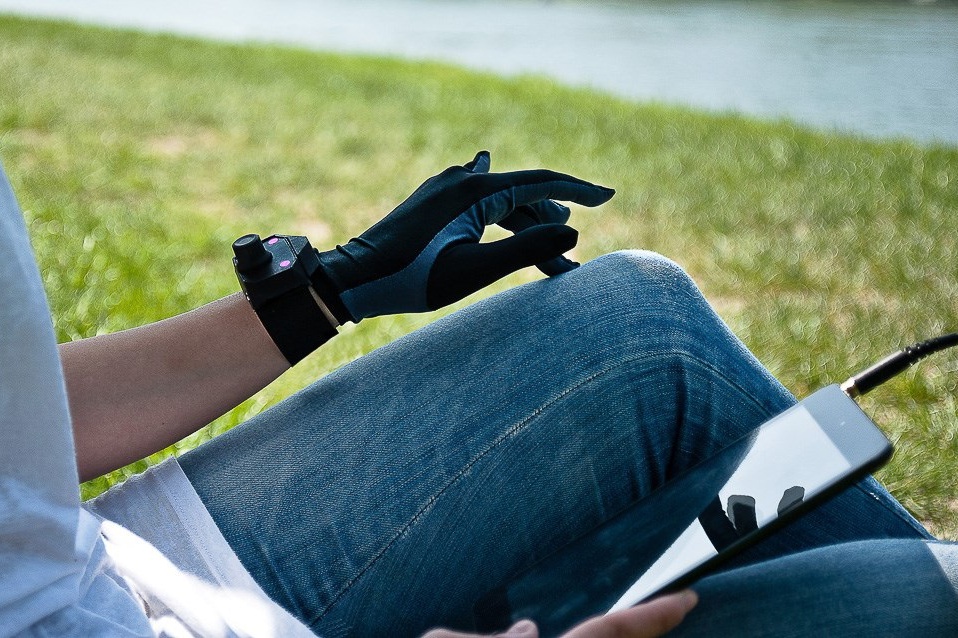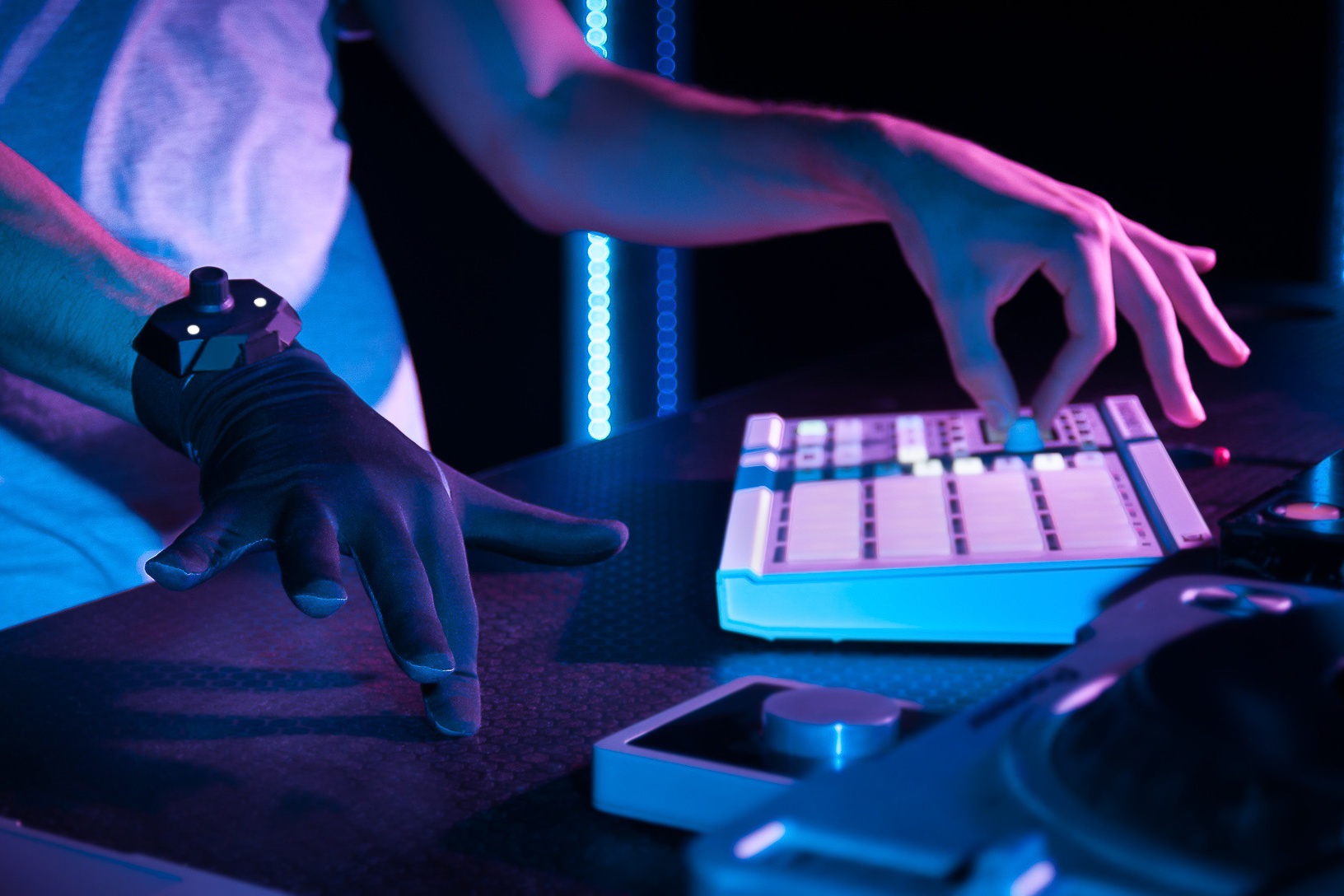Used to control synth samples, compose music, and even add effects on the fly, the system is essentially a sensor suite embedded in a glove that pairs with a controller wristband. Once you put it on, you can make sounds with a subtle tap and alter them with the twist of a wrist, playing percussion, piano, or anything you’ve assigned from the wide world of synths and samples.
Eight pressure-sensitive sensors, composed of polyethylene terephthalate and thermoplastic polyurethane, are distributed over the fingers, palm, side, and heel of the glove to trigger assigned sounds. The length and pressure performed by the user determines the sound duration and intensity of the performance, sending the information back to your computer or synth to create sound.
The wristband controller holds an RGB LED for feedback, two customizable buttons for basic controls like play, pause, or record, and an encoder nob to scroll through note sets. The setup allows you to play live performances, or compose note by note. Once a note or sound is triggered, a movement of the hand or wrist can even tweak it on the fly with an effect, like reverb or echo. The direction and speed of the wrist or hand movement controls how the tone is changed. All of this adds up to a ton of command over the music, but it also seems like it will take some serious expertise and practice to use the glove to its full potential.
Users can customize the sounds and controls via the dedicated Remidi app. The T8 can sync with a pre-loaded sound remix pack from Remidi, but users have complete freedom to make and assign their own samples and synths. Connected to your software of choice via Bluetooth, the T8 lets you record in real-time, virtually anywhere. Ableton, FL Studio, Logic Pro X, Resolume, and Animoog are among the digital audio workstations (DAWs) supported.
While wireless connection brings up latency concerns, the company claims the system is “Ultra Low Latency,” cutting the delay between motion and sound to under 30 milliseconds.
The hardware’s 110 maH battery should keep it going for about six hours and charges with a standard USB connection in about half an hour. Six hours of battery is long enough for any set, and half an hour’s charging time is short enough to fill up quick before a performance. The glove itself is made of a breathable spandex blend of the same fabric used by pro swimmers to stay cool and dry during performances. The final version will be dry-clean only.
Remidi’s Kickstarter campaign is already fully funded at over $50,000. The campaign ends March 18, up to which point backers can grab one glove for $230, or a pair for $400, saving half off the retail of $400 per hand. The Remidi T8 is expected to ship in September, 2016.
Note on crowdfunding: It’s always good to remember that with any crowdfunding project comes a certain amount of risk. DT has no relationship with Remidi, and there are always multiple factors that can sink any project long after it’s funded so, as always, venture ahead at your own risk.






